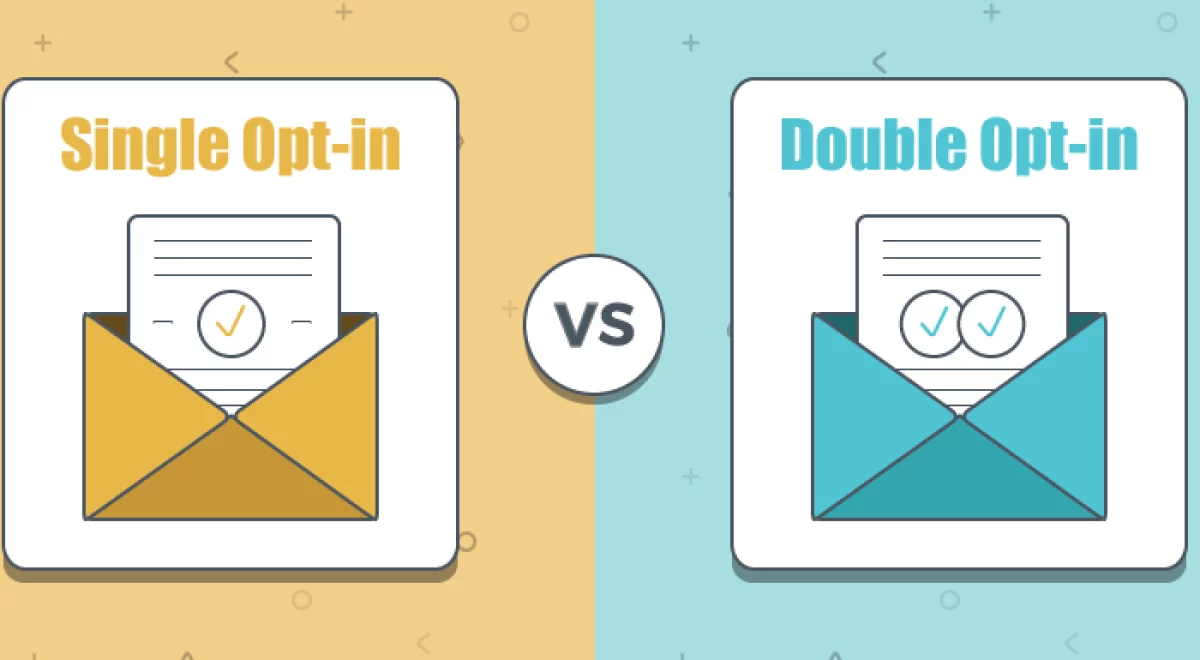Email marketing has long been a cornerstone of digital marketing strategies, enabling businesses to reach their target audiences directly through inboxes. A key aspect of email marketing is how subscribers are added to an email list; this process may use either double opt-in or single opt-in methods, and each method comes with its own set of advantages and drawbacks that affect not only its size and engagement but also quality and quantity of subscribers. Here, we explore these differences between double opt-in and single opt-in in email marketing so you can make informed decisions when planning campaigns for campaigns!
Single Opt-In: For Rapid Entry
The single opt-in method is the more straightforward approach. Subscribers who join your email list through this method provide their email address and possibly some basic data through a signup form on your website or landing page and are instantly added to your list, receiving marketing messages without further action required from them. It provides several advantages:
Single Opt-in makes subscribing to your list simple for subscribers – they submit the signup form and are instantly added!
Faster List Growth: Since there’s only one step involved with single opt-in forms, they tend to promote faster list growth – perfect for time-sensitive promotions or when trying to increase subscriber count quickly.
Potential Limitations of Single Opt-In:
However, using the single opt-in method also has some downsides:
Lower List Quality: Single opt-in poses the risk of producing lower-quality email lists because there’s no verification step to validate provided email addresses, potentially leading to higher bounce rates and inactive subscribers that negatively affect deliverability and engagement rates.
Spam Submissions: Without a verification step, malicious users or bots could submit spammy emails that degrade list quality further.
Double Opt-In: Providing Additional Confirmation.
The double opt-in method adds the step of verification during subscriber signup. Here’s how it works:
Initial Signup: As with the single opt-in process, subscribers provide their email addresses and information via a signup form on your website.
Confirmation Email: Instead of being directly added to an email list, subscribers receive a confirmation email upon signing up which usually contains a link or button they need to click to confirm their subscription.
Verified Subscribers: Only when subscribers click the confirmation link are they added to your email list, providing additional assurance that their email address is valid and that they genuinely wish to subscribe to your mailings.
Advantages of Double Opt-In:
Greater Quality List: With double opt-in, your email list is more likely to have higher quality subscribers who confirm their subscription and you’ll likely have fewer fake or mistyped addresses on it.
Engaged Subscribers: Subscribers who have completed the confirmation process are likelier to engage and enjoy your content, leading to higher open rates, click-through rates, and overall campaign effectiveness.
Legal Compliance: For regions such as Europe with their General Data Protection Regulation (GDPR), double opt-in is an invaluable way to verify whether subscribers have given proper consent, thus increasing legal compliance and improving legal compliance.
Considerations and Best Practices:
User Experience: While double opt-in lists tend to have higher list quality, some subscribers may fail to complete the confirmation step leading to reduced list sizes compared with single opt-in methods.
Communication: Ensure subscribers understand the double opt-in process clearly, explaining what to expect once signing up and outlining its benefits.
Confirmation Email Design: Carefully consider how you design confirmation emails. Ensure they are visually appealing and that the call-to-action button for subscribing can easily be found by your readers.
Incentivize: Create incentives for subscribers who complete the double opt-in process, such as discounts, downloadable resources or exclusive content.

Conclusion: Making the Right Choice
Both double opt-in and single opt-in methods offer distinct advantages and considerations; which one you choose depends on your marketing goals, target audience and willingness to trade off list size for quality. If maintaining high-quality subscriber relationships is a priority for you then double opt-in should likely be chosen; otherwise, rapid list growth might make single opt-in suitable with regard to potential quality issues.
Today’s internet users are more concerned than ever about privacy and engagement; many marketers rely on double opt-in to build a clean subscriber list. No matter what method is chosen, though, remember that transparency, clear communication, and providing relevant content remain core components of a successful email marketing campaign.



